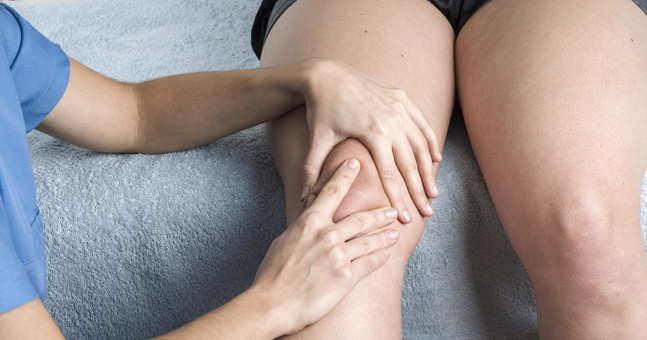
Ligament tears in the knee aren’t uncommon, but usually, it’s injuries of the ACL (anterior cruciate ligament) we hear about. That’s because of all knee ligament injuries, ACL injuries tend to be most common. Other main ligaments of the knee include — the MCL, the PCL and the LCL — can be injured, too. And as with the ACL, if the injury is serious, you’re probably going to need to have surgery to repair it. A lot of patients worry that knee surgery means they’ll be sidelined for a long time — or worse, that they may never recover complete use of their knee. But thanks to advances in surgery and therapy techniques, Dr. Van Thiel and the team at OrthoIllinois help Chicago-area patients enjoy optimal outcomes with recovery programs tailored to their needs. This post will look at MCL tears — how they occur, how they’re treated, and what to expect if you need MCL surgery.
What is the MCL?
The MCL, or medial collateral ligament, is a strong, fibrous band of tissue that connects your thigh bone (or femur) to your shin bone (or tibia). It’s located on the inside of your knee and works in conjunction with the lateral collateral ligament (LCL) on the outside of the knee, along with the ACL and PCL in the center of your knee, to keep your knee stable and flexible. The MCL specifically prevents your knee from flexing or rotating too far inward. Not surprisingly, MCL injuries are mostly caused by activities that involve rapid pivoting, twisting, or rotation, like changing direction quickly when running, or twisting your knee in a fall.
MCL tears: From mild to severe
Ligament injuries are referred to as sprains, and they’re classified or graded by severity. Grade 1 sprains are the mildest, and they typically resolve on their own with a little TLC. In a grade 2 sprain, the ligament is stretched and often partially torn. You’ll probably have some swelling, and your knee may feel weak or unstable. Again, many grade 2 sprains heal on their own with physical therapy and other conservative treatments.
Grade 3 sprains are the most severe. These occur when the ligament is badly torn — usually completely torn in two. These sprains need to be surgically repaired to restore stability and function in the knee joint.
MCL surgery: How it’s done
MCL surgery is an outpatient procedure, which means you’ll be able to go home the same day as your procedure. Prior to surgery, Dr. Van Thiel may use an instrument called an arthroscope to examine the knee to determine the best approach for treatment. The arthroscope is equipped with a tiny camera. Dr. Van Thiel injects a small amount of fluid into your knee joint to gently expand it. Then he inserts the scope into the joint via a tiny incision. The fluid makes it easier for the camera to “see” inside your knee. Images are projected back to a monitor, allowing Dr. Van Thiel to assess damage in and around the joint without making large incisions. Although arthroscopic evaluation isn’t always necessary, it can be helpful in cases where other parts of the joint might be damaged, along with the MCL.
There are two primary types of MCL surgery: repair and reconstruction. Both types of surgery use an incision along the inside of your knee. This incision allows Dr. Van Thiel to access the entire ligament. If the ligament is torn where it attaches to either the femur or the tibia, strong anchors may be used to reattach it. When a ligament is torn in the middle, there’s a small chance it might be sewn back together (repaired). But it’s more likely it will need to be replaced (or “reconstructed”) using a graft from elsewhere in your leg or from a donor. In that case, the damaged ligament will be completely removed and the new graft will be attached to the femur and the tibia.
MCL surgery recovery time
As with any knee surgery, your recovery time will be based in part on the extent of your injury, the type of surgery that’s performed, your ability to heal, and your own goals and expectations. Soon after your surgery, physical therapy will begin. Seeing the therapist on a regular basis is an important part of the healing process. Strengthening and gentle stretching exercises can help your knee regain its function, and it’s also important for preventing stiffness that can interfere with your recovery. Overall, you should expect to regain most of your joint function within about two to three months, but returning to sports can take longer. Dr. Van Thiel will work with you to ensure your recovery and rehab program is focused on helping you meet your unique goals.
Leading Chicago-area knee specialist
MCL surgery, injury treatment, and recovery vary based on the “grade” of your injury, your lifestyle, your overall health, and other factors. Dr. Van Thiel is skilled in all sorts of MCL injury treatment, helping patients at OrthoIllinois restore knee function through cutting-edge techniques tailored to the patient’s individual needs. If you’re having any type of knee pain, prompt evaluation is the key to preventing further joint damage. To schedule an evaluation at our Rockford office, call us today at .





